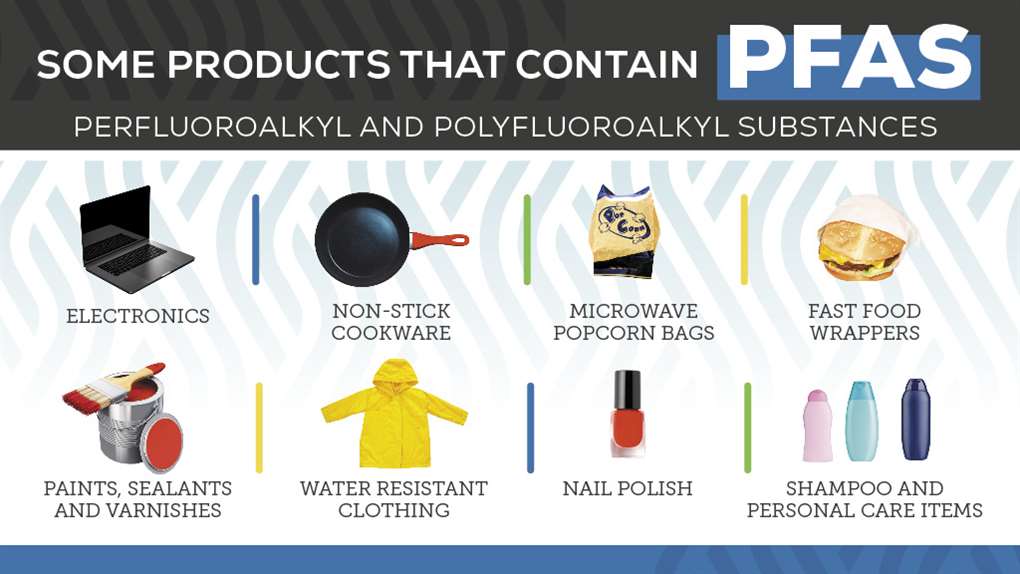ALBANY, Oct. 6, 2022 — The state Department of Health published draft rules Wednesday on drinking water limits for 23 toxic PFAS ‘forever’ chemicals, prompting advocates to say they ignore the latest science and a major federal health warning while falling short of actions by other states.

The proposed regulations, released more than three months after a June 19 statutory deadline, follow recommendations in May from the state’s Drinking Water Quality Council.
They don’t reflect a dramatic warning in June from the Environmental Protection Agency about the dangers PFAS toxins pose to human health.
“DOH ignored the latest science from EPA that definitively stated that there is no safe level of some of these PFAS chemicals in our water,” said Rob Hayes, director of clean water at Environmental Advocates NY.

PFAS is shorthand for the class of thousands of man-made chemicals used to make a wide range of common products, including non-stick pans, stain resistant furniture and waterproof gear. They resist breakdown, and exposure to even tiny amounts in drinking water has been linked to cancers, harm to the liver and kidneys and various other health problems.
New York already requires any water utility that supplies tap water with concentrations of PFOA or PFOS at 10 parts per trillion or more to clean up their system.
The new draft rules would apply the same standard to four other chemicals within the PFAS class. Also, if any combination of the six targeted chemicals exceeds 30 ppt in a utility’s finished drinking water, it would have to correct the problem.
On June 15, the EPA slashed its “health advisory level” for PFOA and PFOS more than a thousandfold. The 70 ppt advisory level set in 2016 was cut to 0.002 ppt for PFOS and 0.004 ppt for PFOA. (Unlike New York’s maximum contamination limits, the EPA’s health advisory limits are not enforceable.)

In its June announcement, EPA warned that many other chemicals within the PFAS class are also potential health risks. The DOH plans to address some of them.
Its proposed rules call for water customers to be notified when their tap water is contaminated with any combination of six other PFAS compounds in concentrations totaling 30 ppt. Notification would also be required if any combination of 13 other PFAS compounds exceed a total of 100 ppt.
The DOH is holding a 60-day public comment period on its proposed rules before releasing the final regulations. By law, the final rules had been due last month.
Under the draft, New York has about 3,000 water utilities that would be required to complete tests for PFAS compounds in their tap water by Dec. 31, 2023. Each system would be required to comply with maximum contamination limits on the six PFAS compounds by Jan. 1, 2025.

“Go figure,” said Loreen Hacket, a PFAS activist from Hoosick Falls who believes the MCLs should be enforced much sooner.
“Think about a baby or child drinking this stuff,” Hackett said. “In Hoosick Falls, we know what that feels like as parents. Have they learned nothing?”
The DOH turned its attention to regulating the PFAS threat after a water contamination crisis struck Hoosick Falls in 2015.
Hackett criticized the DOH’s latest draft regulations for failing to reflect current science. “They claim they are leading the nation in PFAS regulation, when clearly they are not,” she said. “The Drinking Water Quality Council hasn’t even met since (May 2).”

The draft rules, published in the State Register Wednesday, include details on potential remediation costs based on water utility size and the number customers served.
Costs for installing granulated activated carbon treatment were reported to range from an estimated $25,000 for water systems serving less than 500 people to $8.9 million for large systems servicing 100,000 or more people.
The draft notes that water systems will be able to draw on substantial state and federal funds available for PFAS treatment. That includes $2.5 billion available through the 2017 New York State Clean Water Infrastructure Act and hundreds of millions though a federal infrastructure bill enacted in 2021 that specifically targets PFAS cleanup.
Hackett argued that the costs of PFAS remediation are far less than the health costs resulting from exposure to the toxins.

In July, researchers at New York University calculated the economic burden of PFAS exposure to Americans to be at least $5.5 billion a year, and possibly as high as $63 billion a year.

NYU researchers Linda G. Kahn and Leonardo Trasande identified five medical conditions with particularly strong links to PFAS: low birth weight, childhood obesity, kidney cancer, testicular cancer and hypothyroidism.
“Our findings add to the substantial and still-mounting body of evidence suggesting that exposure to PFAS is harming our health and undermining the economy,” said Kahn, an assistant professor in the Departments of Pediatrics and Population Health at NYU Langone Health.
Hayes of Environmental Advocates NY said the DOH’s draft regulations don’t go far enough in regulating PFAS in drinking water — or as far as states such as Massachusetts and Maine.
For example, Massachusetts sets a combined limit of 20 ppt for the same six compounds that DOH has targeted for a combined limit of 30 ppt.
The DOH proposal allows at least 500,000 New Yorkers to continue to be exposed to these toxic chemicals every time they turn on the tap,” Hayes said. “That’s unacceptable. We need to zero out these chemicals in drinking water.”

